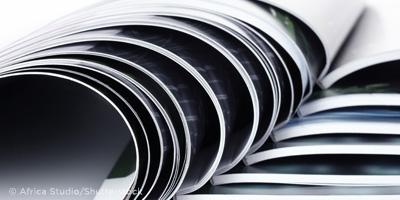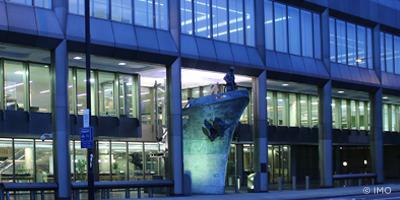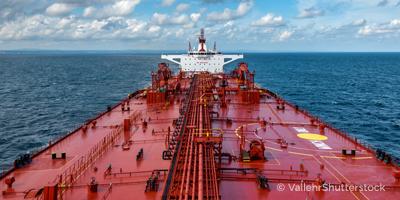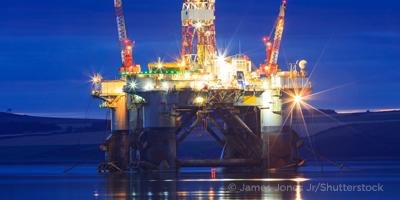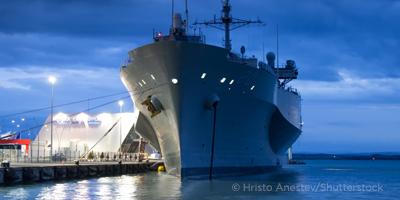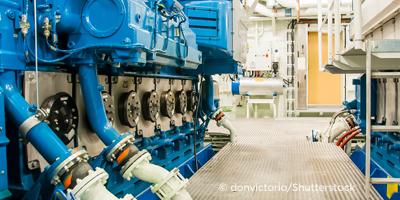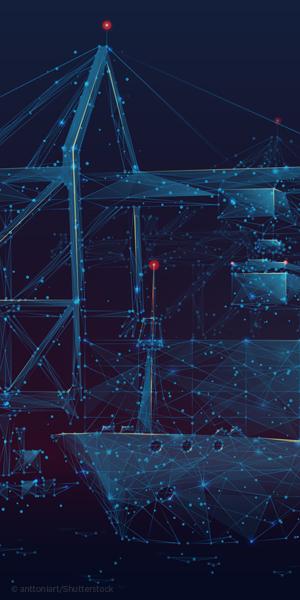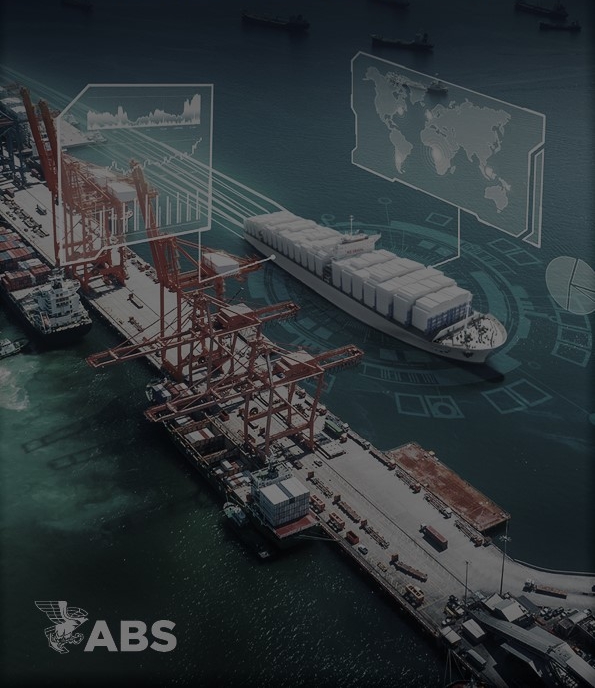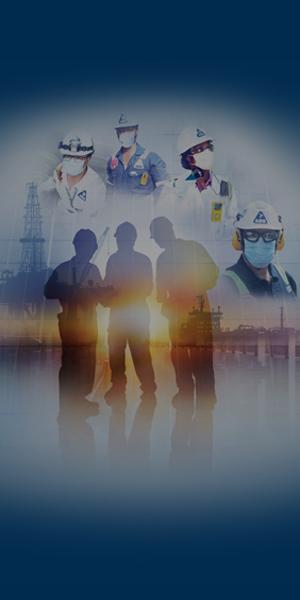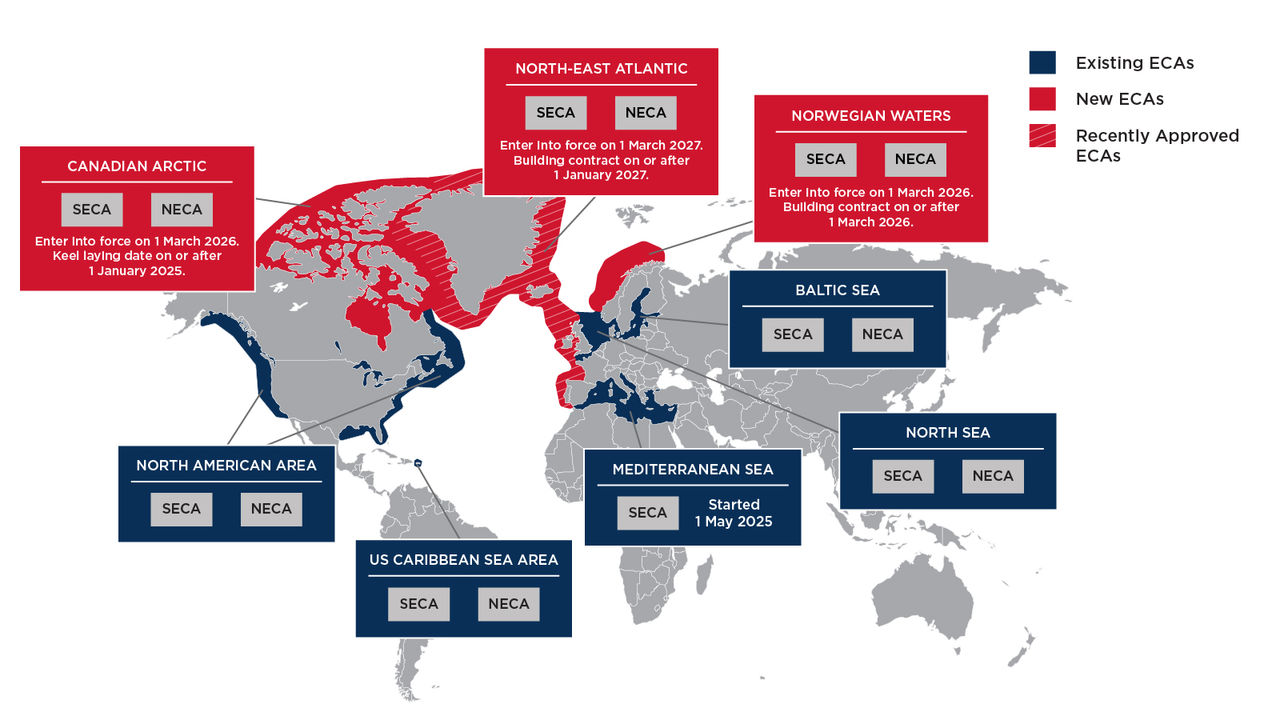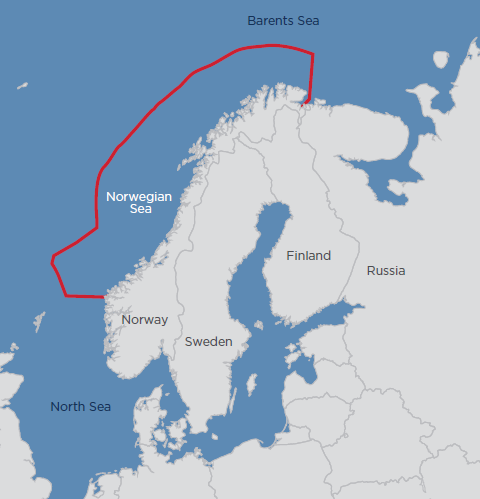The Mediterranean Sea SOₓ ECA (MEPC 79)
Mediterranean Sea Emission Control Area for Sulphur Oxides (SOₓ) and Particulate Matter (PM) entered into effect on May 1, 2025, introducing the requirement for ships operating in the area to use fuel oils with a sulfur content not exceeding 0.10% by mass.
Resolution MEPC.361(79) was brought before the IMO in December 2021 and adopted December 16, 2022. The following changes to MARPOL Annex VI took place in accordance to the conclusions of the MEPC 79th session:
- Designation of the Mediterranean Sea as an ECA entered into force on May 1, 2024, with a one-year grace period on implementation, set to ensure a smooth transition
- SOx limit of 0.1% m/m to be fully enforced starting May 1, 2025.
Other ECAs (Regulations 13.6 and 14.3 of MARPOL Annex VI)
The North American area, the Caribbean Sea, the Baltic Sea area and the North Sea area are currently designated as both NOx and SOₓ ECAs.
1. North American area: It covers the area of the Pacific and Atlantic coasts of Canada and the United States, including the French territory of Saint-Pierre-et-Miquelon, as well as the Gulf of Mexico coast.
- NOx Emissions: Ships constructed (keel laying date) on or after January 1, 2016, operating in this area are to comply with IMO Tier III emission limit, except engines solely used for emergency applications such as engines for emergency generators, emergency fire pumps and engines installed in lifeboats.
- SOx and PM Emissions: From August 1, 2012, the sulphur content of fuel oil used on board the ship shall not exceed 0.10% m/m.
2. Caribbean Sea: It applies within designated waters around Puerto Rico and the U.S. Virgin Islands.
- NOx Emissions: Ships constructed (keel laying date) on or after January 1, 2016, operating in this area are to comply with IMO Tier III emission limit, except engines solely used for emergency application such as engines for emergency generators, emergency fire pumps and engines installed in lifeboats
- SOx and PM Emissions: From January 1, 2014, the sulphur content of fuel oil used on board the ship shall not exceed 0.10% m/m.
3. Baltic Sea area: It covers the Baltic Sea, including the Gulf of Bothnia, the Gulf of Finland, and the entrance to the Baltic Sea bounded by the Skaw (57°44.8′ N) in the Skagerrak.
- NOx Emissions: Ships constructed (keel laying date) on or after January 1, 2021, operating in this area must comply with Tier III NOₓ emission limits, except engines solely used for emergency application such as engines for emergency generators, emergency fire pumps and engines installed in lifeboats.
- SOx Emissions: From May 19, 2006, the sulphur content of fuel oil used on board the ship shall not exceed 0.10% m/m.
4. North Sea area: It covers the North Sea, including Skagerrak, and the English Channel and its approaches.
- NOx Emissions: Ships constructed (keel laying date) on or after January 1, 2021, operating in this area must comply with Tier III NOₓ emission limits, except engines solely used for emergency application such as engines for emergency generators, emergency fire pumps and engines installed in lifeboats.
- SOx Emissions: From November 22, 2007, the sulphur content of fuel oil used on board the ship shall not exceed 0.10% m/m.



